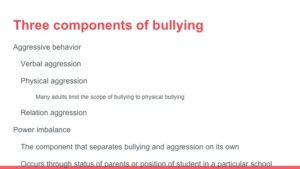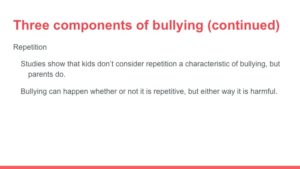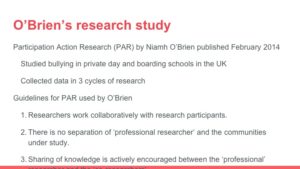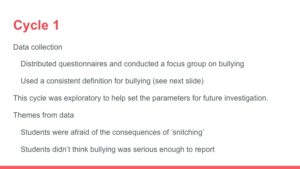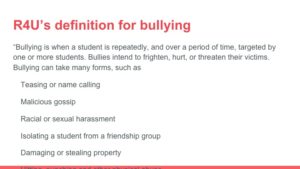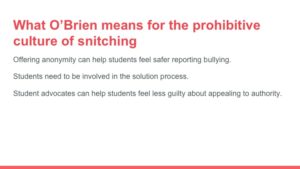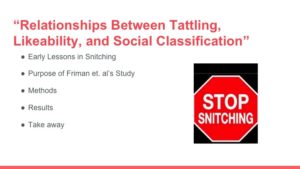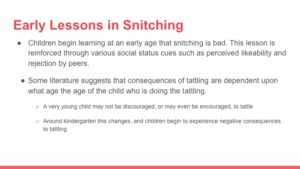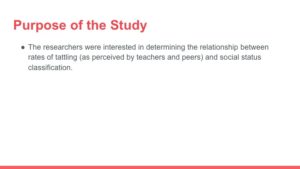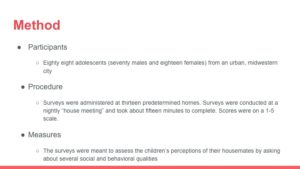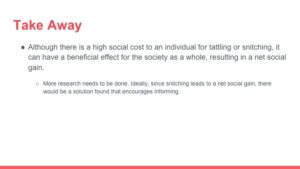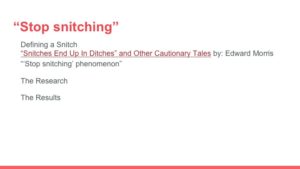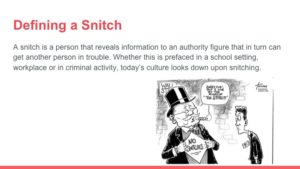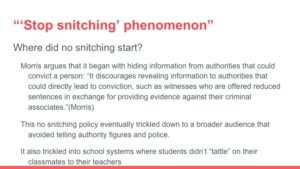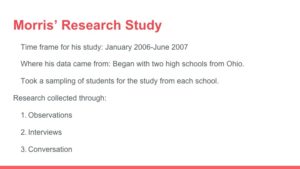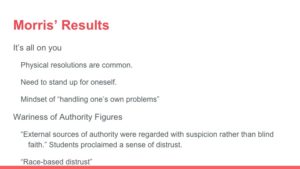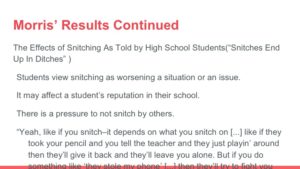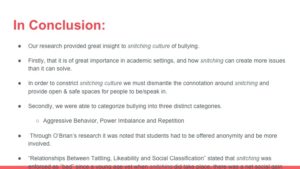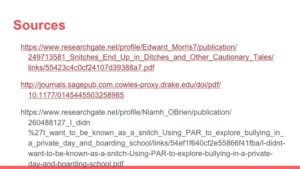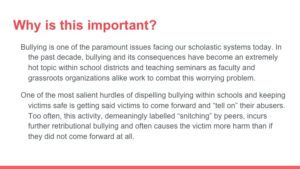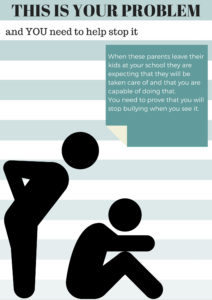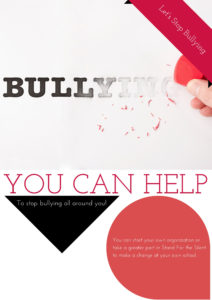This digital story mapping project was created by students in SCSS 76: Making Families Public in the fall of 2017.
Tag: gender (Page 1 of 3)
Claire Franksen created this digital story in the 2017 J-term class Documentary Video Challenge: Digital Storytelling for Social Justice.
Mitch Kedzior created this digital story in the Drake University J-term class SCS 153: Documentary Video Challenge: Digital Storytelling for Social Justice, taught by Professor Sandra Patton-Imani.
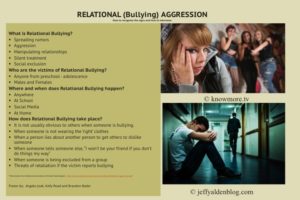 Kelly Read, Angela Leak, Brandon Bader
Kelly Read, Angela Leak, Brandon Bader
Relational Bullying is the opposite of physical bullying, yet just as damaging to self-esteem if not more so. The wounds from physical bullying may fade after time but wounds from relational bullying can last for years if not a lifetime. Some examples of relational bullying are peer pressure, gossip, social exclusion and feigning friendship to gain trust of the victim. According to a study by the University of Illinois by Rodkin et al, bullies have been known to either have high self-esteem, or worse, be former victims of bullying themselves (2015). Some of these perpetrators have been marginalized socially themselves, suffer from low self-esteem, and use bullying as a way to take their anguish out on someone else. Additionally, although some bullies come from good homes, just as many come from dysfunctional homes with abusive parents.
With the popularity of the internet, the amount of relational bullying has exploded. Victims are no longer able to escape their bullies by leaving the school and going home, instead the abuse continues at home online. Especially with the widespread use of smartphones now, at times it is inescapable. The abuse has intensified online as well. Perpetrators create Facebook pages for example, inviting peers to trade information about the victim and post pictures, all without permission. This particular method has resulted in countless suicides. Just recently, there was an article on npr.org about the announcement that for girls aged 15-19 suicide is now the #1 cause of death(2015). Although this statistic may not be entirely due to bullying, it is without a doubt it is a large factor.
There are many psychological temperaments that a bully may have. Some of these are: Anger, Depression, and Anxiety. Anger management should be part of teaching children in the no bullying area. Teaching children at a young age, on through adolescence on how to control their anger and even direct it in a more productive way. Anger and aggression are main components of bullying. Depression is common on victims of bullies and in bullies themselves. This area is important because depression leads to suicides, especially in middle-school aged children. Victims of bullies often have depression, therefore these children are the most at-risk. Anxiety is also a component of bullies and of bullied victims. Anxiety can cause students to miss school thus heightening anxiety for having to return and having to face peers and teachers and homework.
The feminist social justice approach is to treat the bullies and the victims the same. Meaning, teach each child the same for the symptoms and psychological aspects as listed above.
We should all be treated the same. The laws in this country allow all children to have a free education and therefore we all have to live together. Approaching the problem of bullying
From a psychological aspect should alleviate the bullying problems we are currently facing.
Preschoolers through adolescence have been bullies. Preschoolers do not have the verbal and cognitive skills to hide it as well as the older children, therefore it is easier to recognize.
As children age, they gain skills in which they could covertly bully other students. Being a victim of a bully also causes children to be rejected by their peers. Not only are they being victimized by the bully, but then rejected by others because they cannot defend themselves, nor will anyone assist the victim. Boys and girls are both equally bullies and victims.
Educators are more focused on physical bullying than relational bullying. Relational bullying is hard to recognize because it can be verbal, silent, on social media, through notes, whatever way the bully can get to the victim. It can be subtle, for example, “You can’t sit with us at lunch today.” or “You can’t be friends with us today.” The child would be alienated from their ‘normal’ group of friends. There is no evidence of this behavior and of course the bully will not admit it. Educators would not easily recognize this unless it is self-reported. By being aware of their students and care monitoring of these students, being able to identify bullies and victims would become more prevalent. Adults, though, typically ignore this type of bullying and disregard it as, oh, boys will be boys, or those girls always stay together.
To combat this, educators need to be aware of the subtle signs of relational bullying and not rely on the victim to speak out. Schools might even need to look into support staffs that are IT savvy who will take on the responsibility of monitoring social networking for signs of trouble. Schools could also have anonymous ways of reporting harassment for those who want to report instances of relational bullying. As bullying has evolved, methods to combat them need to evolve as well. Educators as well as administrators and staff need to think outside the box so to speak. Obviously we will never be able to eradicate peer to peer relational bullying completely, but we can at least try.
Works Cited
http://www.cdc.gov/violenceprevention/pub/youth_suicide.html
http://www.stopbullying.gov/what-is-bullying/definition/index.html
http://nobullying.com/relational-bullying/
http://www.npr.org/sections/goatsandsoda/2015/06/02/409731413/suicide-no-1-cause-of-death-for-older-teen-girls
Rodkin, P. C., Espelage, D. L., & Hanish, L. D. (2015). A relational framework for understanding bullying: Developmental antecedents and outcomes. American Psychologist, 70(4), 311-321. doi:10.1037/a0038658
Lea Kozulic, Susan Smith, Emily Tyler
We learned that the empathy is the capacity to understand what another person is experiencing from within the that person’s frame of reference. In the movie Bully, noone really felt or experienced empathy with Alex besides his parents who went to see the principal who were devastated and desperate because they knew what their son was going through and they couldn’t have helped him on their own. Principal on the other hand, didn’t really show signs of empathy with the parents because she said she would help them in fall and she did not. Finally, she intervened and asked her assistant to work on the case but it didn’t end up being very effective because children kept teasing him and the boy ended up being scared even more. Same thing with the girl named Kelly who was a lesbian. In the end of the movie, she said that “maybe there’s other place she could go and make a difference”. But, not here.
Obviously, forcing the children to the things they don’t really want to do, won’t make them stop teasing other kids because they can’t think rationally – or ’empathically’ – at their age. Their emotional intelligence isn’t developed enough for them to percieve what is right or what is wrong. It’s all about how their idols or role models influence them. This is where the role of parents comes up. Parents are children’s role models at young age. They copy their moves and want to be like them. Throughout the readings and the book The Bluest Eye, we could learn and a lot and expand our views about the power of role models. There was a big difference in the attitude of Pecola and Claudia towards themselves and the fact they were black. It all depended a lot about their role models. Pecola didn’t have good role models because here parents were a mess themselves and didn’t appreciate their own lives. They accepted the life a misery which was something that started in their own heads at their very young age. On the other hand, Claudia was lucky enough to have a somehow stable family where people loved and supported each other.
This is why it’s important to give a good example of being a good and strong person to kids at the very young age. It’s important to teach them mannerism and good values. It’s important to teach them to respect other people and the differences between us. It is important to teach them that we are all equal but different as well. That is the art of nurturing. This is where empathy really is important. It is easy to identify with people who have very similar habits as you do, but how are you going to teach your kids to respect people who are different, but at the same time the same as you are? It all starts at young age and this is where parents teach their kids how to respect kids and identify themselves with others. One of the good ways would be to ask their kids how would they feel if they were bullied? How would they feel if they would have been in the bullied kid’s skin? Probably not very good. This is why we created a poster that would remind the children that it is their choice whether they are going to be bullies and to make it look bad. It is also important to treat those kids as young adults because that’s how they want to be treated so it reminds them that everyone has issues of their own that we need to respect.

Torina Gedler, Angela Geametto, Darpan Mehta, Pamela Mulhern
Bullying Final Post Draft
We’ve chosen two posters that a) Encourage students to get motivated by the Stand for the Silent program and b) Reminds the administration that tackling bullying is a big part of their responsibility. Our research indicated that the administration is usually very good at handling bullying cases that are overt (actual physical abuse such as punching or kicking or overt verbal actions such as name-calling and insulting) but not that great at handling the more covert aspects of Bullying. Covert bullying is the kind of bullying done out of sight and involves inflicting harm by damaging another’s social reputation, peer relationships and self-esteem. I.e. involving more relational bullying and threatening looks or hand gestures. Therefore, our posters need to tackle the more covert cases which we realize will be more difficult as we’re trying to bring about systemic changes and not just trying to implement a bullies get punished method.
As we’ve seen from our readings in this class and from the video ‘Bullying’, the conventional methods that have been used so far that focus more on an individual’s psyche don’t really address the problem. The bully is still likely to continue bullying. Instead, our method focuses on treating this as a systemic problem that can only be truly eradicated through making a change in student perceptions about bullying which the first poster aims to do. It is also very important to have a simple poster that encourages a child to look up a program that has much more information in it. Treating bullying is a vast subject and it’s more feasible to provide a starting point via a poster rather than cramming all the information in the poster itself. It also plays on the curiosity of students who are much more likely to learn that way instead of being subjected to posters and material that they are forced to learn.
Giving the bystander room to explore also addresses one of the main challenges of Bystander Programs. Most bystanders don’t step up even when they know bullying is occurring is because of lack of awareness of what steps to take to help stop the bullying. A Lack of awareness leads to lack of courage to step in as they aren’t sure as to what to do. A lot of bystander programs encourage students to step up but the students need to know how or want much more information before they take any action. Consider, also that different students are satisfied with different levels of awareness. Student ‘A’ might step when bullying occurs and tell the bully to cut it but Student ‘B’ might want to know more about what to do if the bully changes his focus to them or ignores them. A self-motivated approach that we propose via having a simple, yet inviting poster is to let the student decide how much awareness he/she needs herself before acting to do something.
The administration needs to realize the effect that they can have on preventing and stopping bullying. Student’s are not likely to report their problems to the administration if they feel nothing is being done when they do report. The administration needs to do continuing education in these areas throughout their time teaching as we learn new techniques to deal with bullying all the time. Bullying is also something that every instructor will see at some point in their career and the importance of combating bullying needs to be remembered with each student encounter. Parents are leaving their kids at school with the belief that they will be in safe capable hands and administrators need to realize how important that makes their jobs. The internet opens a wide area of possibilities for administrators to help combat bullying in their own school. They can reach out to other schools that have had success in lowering incidence of bullying on what they did and how that worked. There are various workshops available to administrators currently on the subject of bullying and each school district should research the best one for their school to take part in.
The administrators also have the responsibility to bring bullying prevention exercises to the students. The administration will have to take what they learn from their own experiences to the students in a way that the students will take it seriously. Administration needs to show the students the importance of the program and the gravity of the situation for the program to have any success. Once the workshop of sort has been presented to the students the administration should make available options for students to join Stand for the Silent or to encourage the students to making their own anti-bullying program. This type of take charge stance on bullying should especially be encouraged in the students that have the most influence and power in the school such as those on the student council. This would be important because these students are essentially the administration of the students and they already know that they have to power to make changes. The administration needs to realize that while they have great power to end bullying they also still need the students’ cooperation and help in making these important changes.
Research
http://www.nsvrc.org/bystander-intervention-campaigns-and-programs
https://www.notalone.gov/assets/bystander-summary.pdf
http://www.bullyingnoway.gov.au/teachers/facts/types.html









